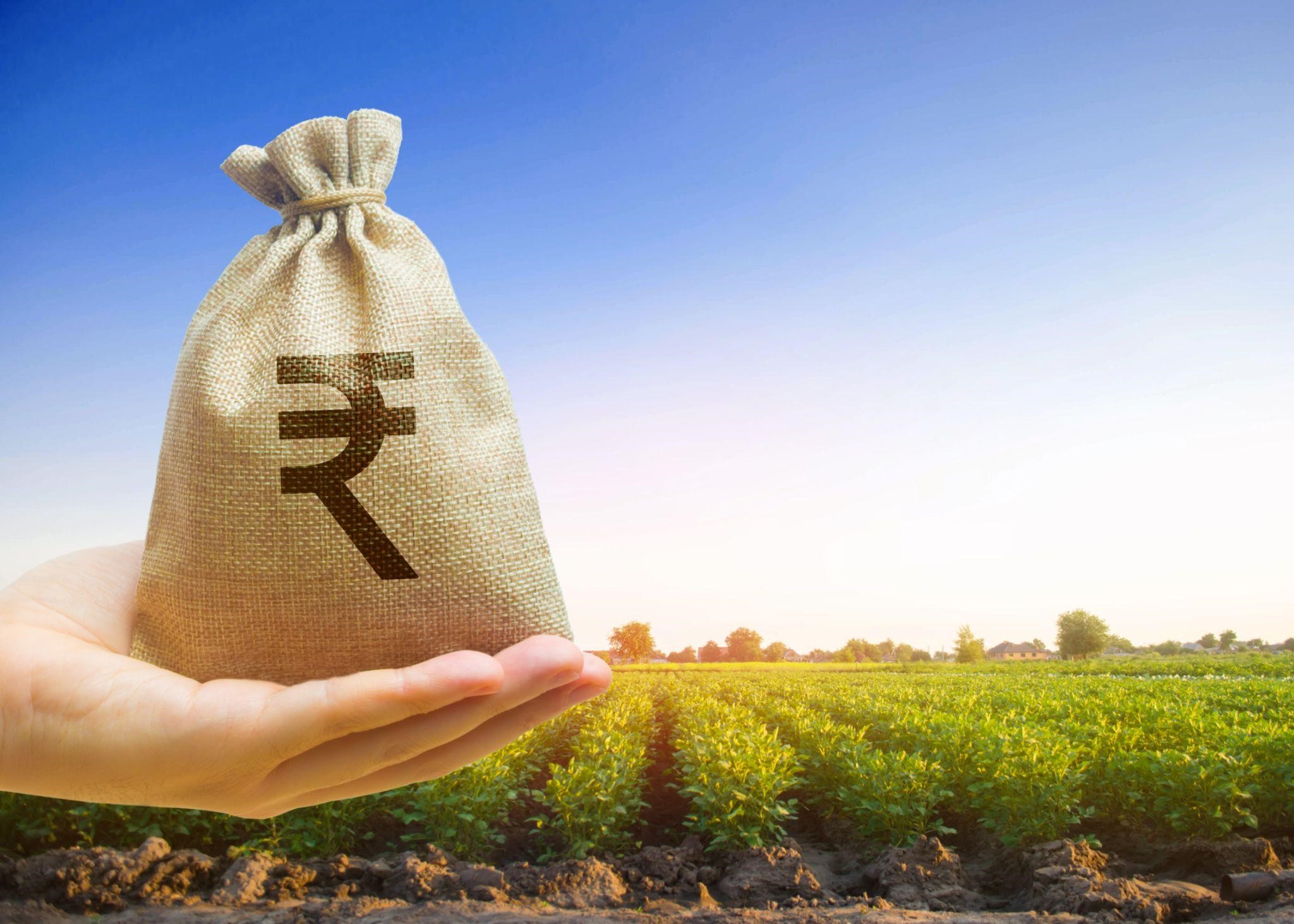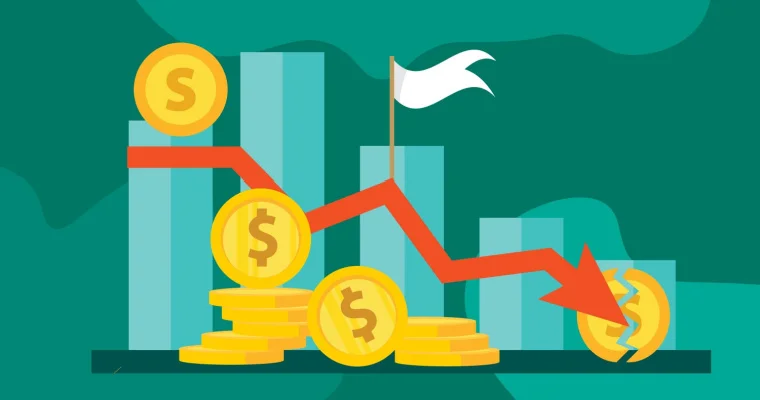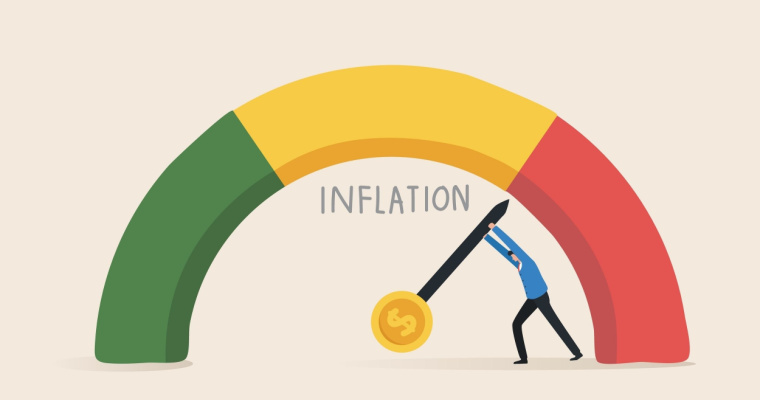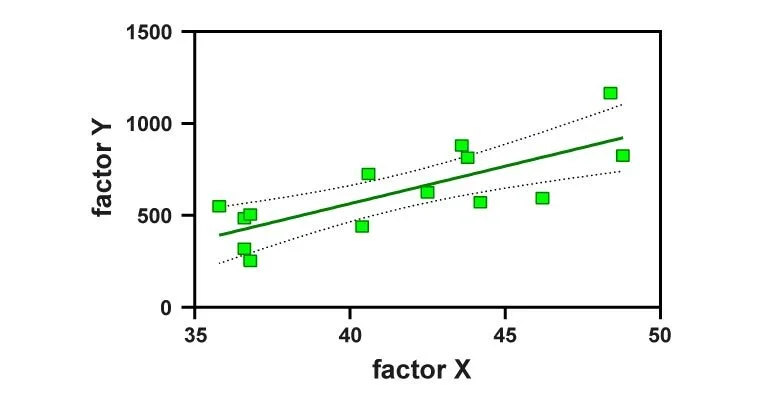How To Apply For An Agriculture Loan – Crop Loan Interest Rates And Banks Offering

About 58% of India’s population is supported by agriculture which contributes nearly 14% to India’s GDP. Nonetheless, most farmers require financial assistance to produce quality crops yearly. The Government and many other financial organisations offer agriculture loans to help them get through tough times and manage their finances.
It is important to have an effective and efficient rural credit delivery system to ensure timely, appropriate, and equal access to loans for increased agricultural profits and productivity.
What is an Agriculture loan?
Agriculture loans are loans that farmers use for various needs, including acquiring farming and irrigation equipment, growing crops, and financing other agriculture-related activities. Also known as crop loans, they can also be used to purchase materials like fertilisers, seeds and insecticides, and hire labour to cultivate and harvest the crops.
Banks, Government agencies, and microfinance firms provide agricultural loans to assist in developing India’s agricultural sector. Compared to other types of loans available to individuals, agriculture loans have lower interest rates.
Purposes of Agriculture Loan
Farmers may require agriculture loans for the following reasons:
- Land acquisition
- Purchasing farm machinery
- Fish farming
- Meeting the demands of seasonal farming
- Creating a dairy or a small poultry operation
- Day-to-day operations
- Working capital requirement, etc.
It can also be used as tractor loans or for buying land, constructing farmhouses and other buildings on the land, buying farm machines and harvesters, buying seeds, fertilisers and pesticides and other inputs required for farming operations.
Banks that Offer Agriculture Loans in 2022
| Lender’s Name | Interest Rates | Processing Fees |
| IndusInd Bank | Starting from 7% p.a. | 1.25% of the loan amount + GST |
| State Bank of India | Starting from 7.25% p.a. | 0% p.a. to 1.25% p.a. |
| IDBI Bank | Starting from 7% p.a. | At the discretion of the bank |
| Karur Vysya Bank | Starting from 8% p.a. | At the discretion of the Bank |
| Central Bank of India | Starting from 7% p.a. | At the discretion of the Bank |
| ICICI Bank | Starting from 7.25% p.a. | Up to 2% (plus applicable taxes) of the facility amount |
| HDFC Bank | Starting from 7.2% p.a. | Up to 2% + GST |
Also Read
Types of Agriculture Loans in India
There are numerous types of agriculture loans in India available for farmers. They can be categorised based on tenure, end-use, and other categories of loans as mentioned below:
1. Based on Tenure
Based on tenure, there are two types of agricultural loans:
- Agriculture Term Loan
Agriculture term loans extend for longer and are provided to borrowers to cover non-seasonal agricultural expenses.
The funds can be used to buy new machinery or improve old ones, install windmills and solar panels, and other renewable energy sources. Further, they can also be agriculture land purchase loans.
The repayment tenure is flexible, allowing borrowers to repay the loan quickly or extend it over the longer term. - Kisan Credit Card (KCC)/Crop Loans
KCC or crop loans are short-term loans provided to farmers to help them meet their seasonal financial needs.
The funds can be used to buy seeds, sow crops, and grow them, among other things. These loans are usually minimal and are given so that farmers can satisfy their seasonal needs.
2. Based on End-Use
Based on the end-use, there are three types of agricultural loans:
- Solar Pump Set Loan
A solar pump set loan is the best alternative for a farmer involved in most irrigation projects who need money to purchase a photovoltaic pumping system. - Farm Mechanisation Loan
Farmers can get farm mechanisation loans to buy, repair, or upgrade their farm machinery.
A few banks offer agricultural mechanisation loans, while others specialise in sub-categories such as drip irrigation, combine harvester or tractor loans. - Loan for Allied Agricultural Activities
Farmers can use this crop loan to cover their current financial and long-term investment needs for associated agricultural activities.
Other Types of Agriculture Loans
Other types of agriculture loans include:
1. Agricultural Gold Loan
This loan can be obtained by using gold as collateral. It covers various farming expenses, such as purchasing machinery or crop production costs. These loans usually have a low-interest rate and allow farmers to employ gold that would otherwise be sitting idle in a locker.
2. Horticulture Loan
Farmers establishing vegetable farms can seek a horticulture loan, which covers the costs of running such farms and other horticulture activities like cutting wild trees, erecting fences, etc.
3. Forestry Loan
A forestry loan can be applied for farmers who grow crops on trees. The loan can cover the costs of activities such as turning barren land into farmed land, installing irrigation channels, eradicating wild forests, etc.
Types of agriculture loans that banks provide
| Bank | Some Types of Agriculture Loans |
| State Bank of India (SBI) | Kisan Credit CardTractor LoanCombine Harvester LoanMultipurpose Gold LoanKCC for Allied ActivitiesIrrigation Loan Pradhan Mantri Mudra Yojana (PMMY) – Allied Agri Scheme for Debt Swapping of Borrowers |
| Karur Vysya Bank | Green Card / Green Card Plus (Kisan Card)Warehouse Receipt LoanKisan TatkalJewel LoanGreen HarvesterLoans for Horticulture ProjectsPoultry LoanDairy LoanKVB Agriculture Infrastructure Fund |
| National Bank for Agriculture and Rural Development (NABARD) | Agriclinic and Agribusiness Centres SchemeNew Agricultural Marketing InfrastructureNational Livestock Mission |
| Induslnd Bank | Production Loan (CC)Investment Loan (TL)Hi-Tech Agriculture (OD)Hi-Tech Agriculture (TL) |
Also Read
Features and Benefits of Agriculture Loan
A few features and benefits of agriculture loans include:
- Low-interest rate
- Minimal paperwork (only a few documents, such as photo identification, proof of address, and a land title deed, are required)
- Most lenders typically process agricultural loan applications within a few business days.
- Farmers can pay back the debt at any time. They are eligible to apply for both short and long-term loans.
- Agriculture loans are transparent, with all associated fees listed up front.
- Depending on the applicant’s background and the loan amount requested, some lenders may also offer unsecured agricultural loans.
- The agricultural loan amount can be used for various agrarian objectives, from short-term seasonal farm operations to long-term farm machinery investments and a loan to buy agricultural land.
Documents Required to Apply for an Agriculture Loan
For an agricultural loan, most lenders require the following documents:
- Two photos (passport size)
- An application form that has been duly completed
- Kisan credit card
- Voter ID, Aadhar card, PAN card, ration card as proof of identity
- Utility bills (electricity/water bills), Aadhaar cards, voter ID, etc., can be used as proof of address.
- Bank statements, ITRs, etc., can be used as proof of income.
How to Apply for an Agriculture Loan in India?
There are different types of loans available, offered by various Government, commercial, agriculture banks and corporate banks. A borrower may study the many possibilities available to them based on the loan’s purpose.
Applicants can apply for the loan in two ways:
- Online – If applicants opt for the online method, they can use the official website, fill out the application form, attach the relevant documents and click on apply now.
- Offline – If applicants prefer the traditional route, they need to ensure they have all the relevant documentation on hand so that the procedure can be completed swiftly.
There will be a verification process regardless of whether one applies online or offline, and the loan will only be disbursed once the application has been authorised.
Things to Remember while Applying for an Agriculture Loan
A few things to remember when applying for an agriculture loan are:
- Research about the lender as numerous finance companies provides farm loans.
- Figure out the financial needs depending on the type of farming one wants, or if they need finance for agriculture equipment.
- Check the eligibility requirements of the lenders and keep the documents handy.
- Have a good understanding of interest rates.
- Check for offers and know the features of agricultural loans.
Final Word
If you are interested in securing an agriculture loan specifically for farming or agricultural means, make sure that you know all the rules and regulations. Some lenders may offer generous terms, others less so – knowing whether these terms suit your needs is vital before applying for the loan.
FAQs
Ans: Each lender has different eligibility criteria when offering crop loans. Some common criteria mandate that the applicant must be between 18 – 65 years of age, they should be Indian citizens with no criminal record, and should not have defaulted on any loan.
Ans: Yes, banks do lend money to farmers who want to buy land. However, different lenders will have different criteria, and the loan amount will also vary from lender to lender.
Ans: Yes, a guarantor is required by most lenders. However, you can visit the lender or their website to ensure that, as different lenders will have different requirements related to the guarantor.
Ans: Banks provide farmers with a nominal interest rate in exchange for special concessions, incentives and flexible repayment alternatives, and the interest rate offered will differ from lender to lender.
Ans: Banks, government agencies, and microfinance firms provide agricultural loans to assist in developing India’s agricultural sector.
Before you go…
- Looking for instant ? personal loans 24*7 anywhere, anytime? Install the Navi app now!
- Or, maybe you’re looking to buy that house you’ve been eyeing and
you need a loan of up to Rs.10 crore. Install the Navi app now and get instant in-principle approval right away! Interest rates starting at 6.95% p.a. - How about an affordable health insurance policy starting at a monthly premium of just Rs. 241? Install the Navi app now and get your policy in under 2 minutes.
- Instead, want to put your savings into action and kick-start your investment journey ? But don’t have time to do research. Invest now with Navi Nifty 50 Index Fund, sit back, and earn from the top 50 companies.
Mutual Fund investments are subject to market risks, read all scheme-related documents carefully.
This article has been prepared on the basis of internal data, publicly available information and other sources believed to be reliable. The information contained in this article is for general purposes only and not a complete disclosure of every material fact. It should not be construed as investment advice to any party. The article does not warrant the completeness or accuracy of the information, and disclaims all liabilities, losses and damages arising out of the use of this information. Readers shall be fully liable/responsible for any decision taken on the basis of this article.

Customer’s Feedback
No comments found.What is Primary Deficit? – Example, Formula & Measures
What is a Primary Deficit? Primary Deficit is the difference between the current year’s fiscal... Read More »What is Financial Ratio Analysis? – Objectives, Types and Uses
Ratio analysis is a process that allows people to assess the financial health of a company. Using t... Read More »Treasury Management – Its Functions, Types and Benefits
Even the most well-funded business can run into huge losses if it does not have the resources to fu... Read More »How Anti Money Laundering Combats Financial Crime?
Anti Money Laundering (AML) is a system of rules, laws, regulations, and procedures that financial ... Read More »What is Salvage Value and Why is it Useful?
Salvage value, also called scrap value, is the value of a specific asset after its useful life. In ... Read More »Key Difference Between Factoring and Forfaiting in Trade Finance
Factoring and forfaiting have grown in prominence as major sources of export financing. For the uni... Read More »What is Factoring and its Importance in Financial Management?
Factoring is a practice in which a company buys the accounts receivable of another company at a dis... Read More »What is Budget Surplus: Its Effects, Advantages and Impact with Examples
When the revenue of a government, business, or individual exceeds its expenses in a given period, i... Read More »What is Balanced Budget – Components, Importance and Examples
In financial planning or the budgeting process, a balanced budget is one in which total anticipated... Read More »What Does Inflationary Gap Mean in Macroeconomics?
In macroeconomics, the difference between current and potential GDP is known as a gap. This gap is ... Read More »What is Accounting Conservatism in Finance and How Does it Work?
Accounting conservatism involves a conservative set of accounting guidelines wherein the worst-case... Read More »Multiple Linear Regression (MLP) – Uses, Formula and Examples
Various statistical models help in establishing a relationship between different variables. Multipl... Read More »Top 10 Chit Fund Schemes in India in 2023
Chit funds are one of the most popular return-generating saving schemes in India. It is a financial... Read More »10 Best Gold ETFs in India to Invest in April 2023
Gold ETFs or Gold Exchange Traded Funds are passively managed funds that track the price of physica... Read More »10 Best Demat Accounts in India for Beginners in 2023
Creation of Demat accounts revolutionised the way trades were conducted at the stock exchanges. It... Read More »20 Best Index Funds to Invest in India in April 2023
What is an Index Fund? An index fund is a type of mutual fund or exchange-traded fund (ETF) that... Read More »Best Arbitrage Mutual Funds to Invest in India in April 2023
Arbitrage funds are hybrid mutual fund schemes that aim to make low-risk profits by buying and sell... Read More »10 Best SIP Plans in India to Invest in April 2023
What is SIP? SIP or Systematic Investment Plan is a method of investing a fixed amount in ... Read More »10 Best Corporate Bond Funds in India to Invest in April 2023
Corporate bond funds are debt funds that invest at least 80% of the investment corpus in companies ... Read More »10 Best Bank for Savings Account in India [Highest Interest Rate 2023]
Savings account is a type of financial instrument offered by several banks. It lets you safely depo... Read More »
























